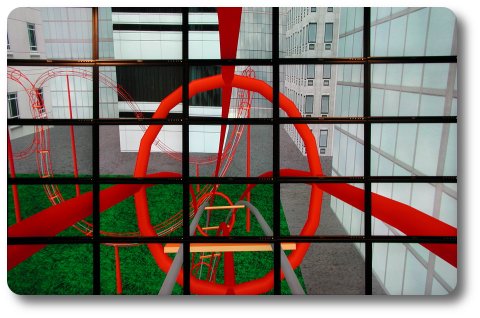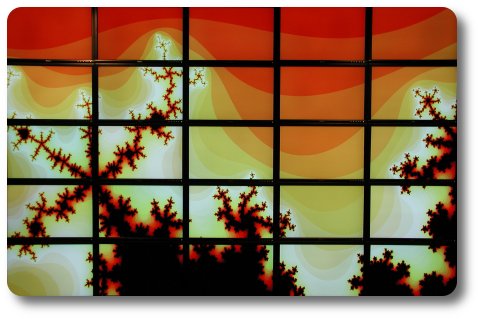Education and Outreach
An important aspect of this research is to ensure a high impact of the cluster towards educational and outreach goals. Towards this end, our graduate courses have started using the cluster. We have also enriched our current coursework with research results obtained on the cluster. The coupled cluster with a large-area high-resolution display screen is serving as a valuable resource to present, interactively explore, evaluate, and validate the ongoing research in visualization, vision, scientific computing, human-computer interfaces, and computational biology with active participation of graduate as well as undergraduate students.

Roller Coaster Simulator on the Display Wall

GPU Accelerated Fractal Browser
One of the important contributions of this infrastructure has been in the education of graduate and undergraduate students at the University of Maryland. During Fall 2006, PI Varshney taught his graduate computer graphics class (CMSC 740) on the cluster. Co-PI Duraiswami has been using the cluster for projects in his Advanced Scientific Computation courses (AMSC 663/664). A number of undergraduates have been involved in various stages of the building, deployment, and use of the CPU-GPU cluster.
The CPU-GPU cluster has also been serving a pivotal role in bringing together a community of scientists from different parts of the campus together. Professor Bill Dorland and Dr. George Stantchev (Center for Multiscale Plasma Physics, UMD) have been using the cluster to explore gyrokinetic data for the study of turbulence in high temperature, ionized gas using GPUs for stochastic volume visualization. Professor Raj Shekhar (Department of Diagnostic Imaging, UMD Medical Center) is using the cluster for registration of volumetric data from multiple modalities, and is using the GPUs for rapidly solving the non-linear warping equations. Professor Jim Reggia (Computer Science, UMD) is involved in a simulation of large-scale neural networks on the GPU cluster. Professor Larry Davis (Computer Science, UMD) is involved in exploring segmentation of images and videos using GPUs and CPUs. The cluster is also accessible by Life Scientists throughout the University of Maryland using Lattice - a Globus-based grid developed by Mike Cummings, one of the senior investigators on this project.